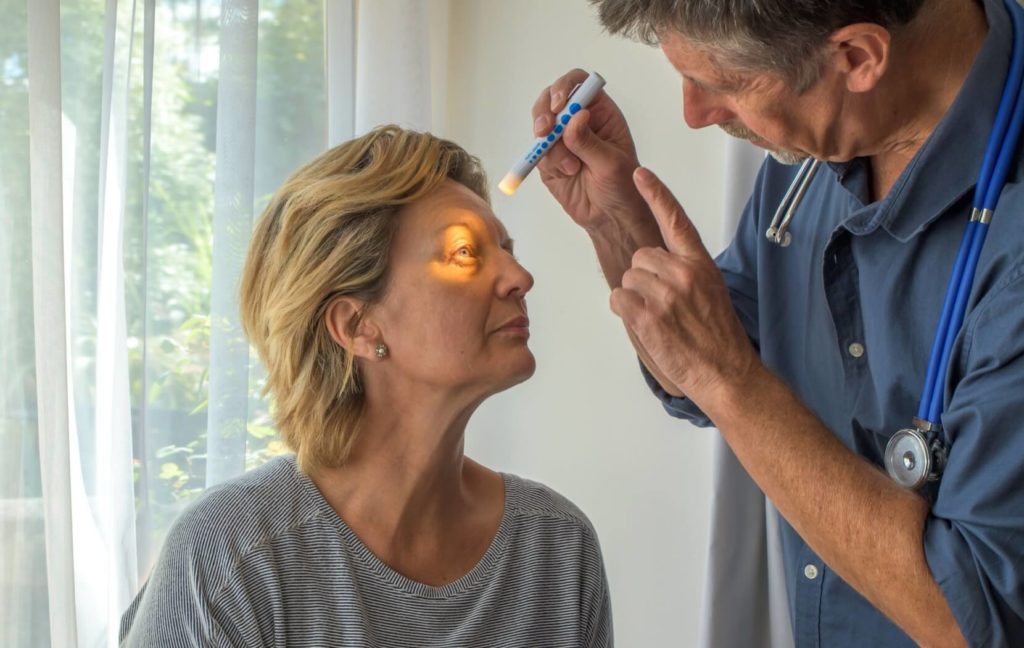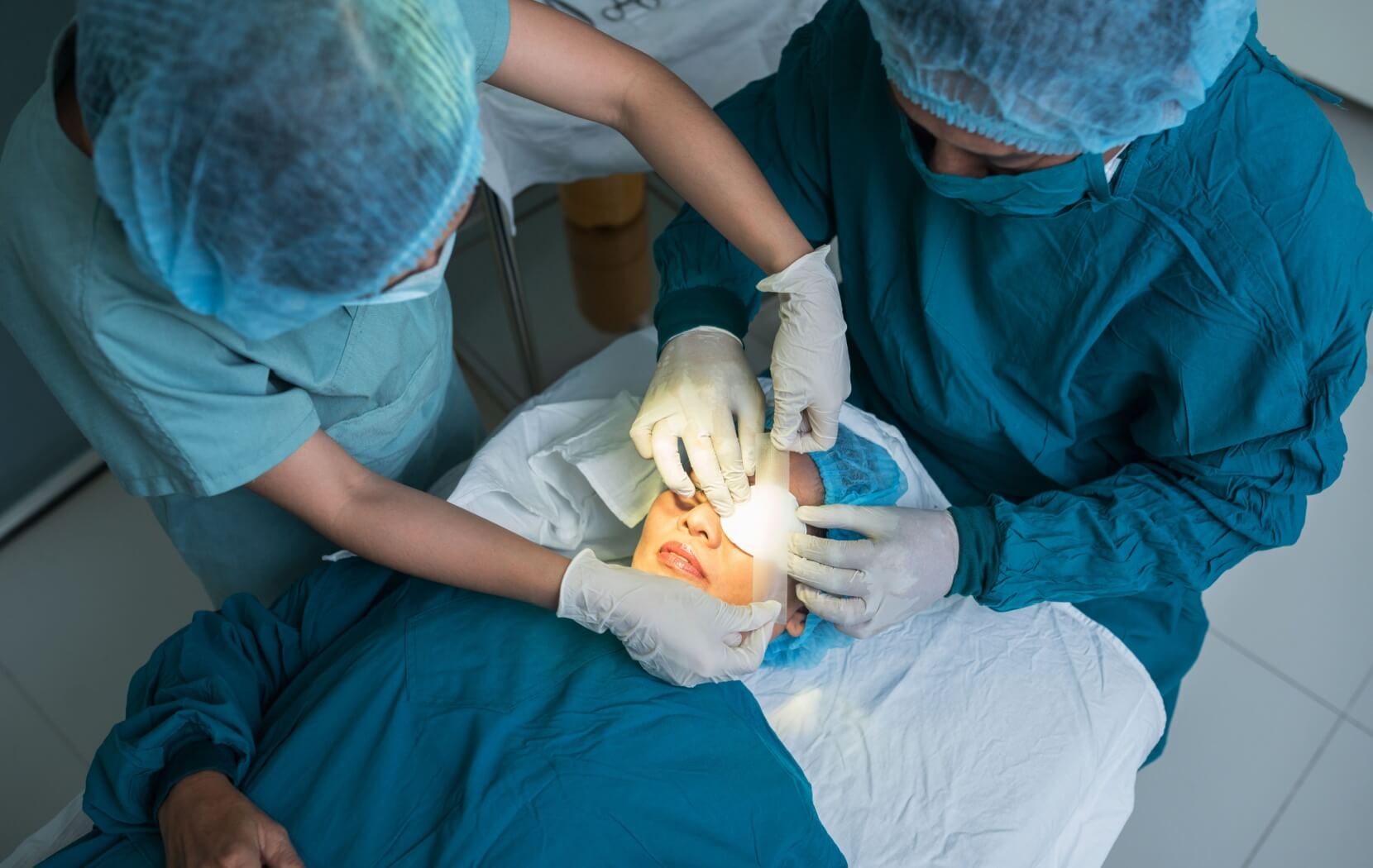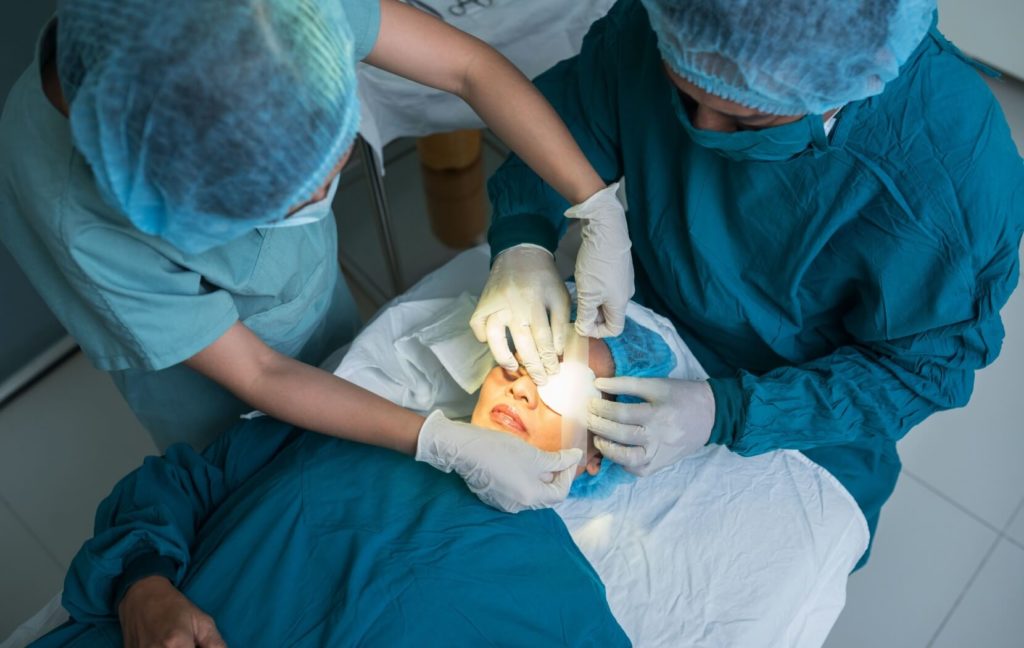When going for cataracts surgery, you may think it makes sense to just have both eyes operated on at once, but there are good reasons to only do one at a time and wait in between surgeries. For instance, by only doing one eye at a time it ensures you always have some level of vision.
But how long do you have to wait in between surgeries? The National Eye Institute recommends you wait a month in between cataract surgeries.
What Are Cataracts?
Cataracts occur when the clear lens of your eye becomes cloudy, leading to blurred or impaired vision. This clouding happens gradually and can make it difficult to see clearly, especially in low light or bright sunlight.
You might notice symptoms like:
- Faded colours
- Glare
- Difficulty reading
Cataracts are most often associated with aging, but they can also be caused by factors like eye injuries, certain medical conditions such as diabetes, or prolonged exposure to UV rays.
Why Is Cataract Surgery Done One Eye at a Time?
Cataract surgery is a procedure where the clouded lens of the eye is replaced by a clear artificial lens, dramatically improving vision. While modern cataract surgery is safe and effective, each procedure is performed on one eye at a time. Here’s why.
Safety First
Even with advanced surgical techniques, there is a small risk of complications like infection or swelling. Operating on one eye at a time minimizes the chance of affecting both eyes simultaneously. This approach ensures that at least one eye has stable, functioning vision during the recovery period.
Evaluation of Results
Operating on one eye at a time allows the ophthalmologist to assess how the first eye responds to surgery. Adjustments can be made for the second surgery if necessary, such as choosing a different lens type or fine-tuning the procedure based on results and your vision preferences.
Patient Comfort
The recovery process involves temporary vision imbalance since the operated eye often has clearer vision than the untreated eye. Handling both eyes at once can make daily activities challenging and uncomfortable.
How Long Should You Wait Between Cataract Surgeries?
The typical timeframe between cataract surgeries on each eye varies based on individual circumstances, it’s generally recommended to wait a month before your second surgery. Here’s why this waiting period is essential:
Allowing Time to Heal
The operated eye needs time to stabilize and adjust to its new lens. Most individuals experience significant visual improvement within a few days, but complete healing may take several weeks. Your doctor will want to confirm that the first surgery was successful before proceeding with the second.
Managing Vision Imbalances
During the waiting period, you may experience an imbalance in vision clarity between the treated and untreated eyes. While this can be uncomfortable, your body typically adapts temporarily until the second surgery is performed.
Ensuring Optimal Planning
The first surgery results provide critical feedback. For example, if the artificial lens implanted in the first eye requires slight adjustments (e.g., for clearer far or near vision), your surgeon may customize the second eye’s lens accordingly for optimal balance.
Exceptions to the Waiting Rule
Though the 2–4 week guideline is standard, timelines can vary depending on factors such as:
Urgent Vision Needs
Some individuals may require shorter intervals—7 to 10 days in rare cases—due to work, driving, or other pressing activities that depend on high-quality vision in both eyes.
Access & Travel Limitations
If you’re travelling long distances for surgery or have limited access to healthcare providers, your surgeon may opt to minimize the waiting period.
Medical Conditions
Existing health issues such as diabetes, inflammation, or autoimmune conditions may necessitate additional recovery time between surgeries to monitor healing carefully.
Always follow your surgeon’s recommendations, as they will tailor the timeline to your unique health, lifestyle, and vision needs.
What Happens During The Waiting Period?

After the first cataract surgery, you’ll enter a recovery and adjustment phase. Here’s what to expect.
The first few days you may experience:
- Mild discomfort, redness, or itchiness in the operated eye—your doctor will prescribe eye drops to manage inflammation and prevent infection.
- Vision clarity will gradually improve within 48 hours for most patients, though some may take a week or longer for full adjustment.
- Avoid heavy lifting, bending over, or direct exposure to water in the eye to aid healing.
The weeks leading up to the second surgery:
- Your ophthalmologist will schedule follow-up appointments to monitor healing and confirm that the first eye is responding well.
- You might face temporary challenges with tasks like reading or driving due to the mismatch in vision between the treated and untreated eye. A pair of interim glasses or an eye patch may help.
Preparing for Your Second Surgery
Once your surgeon confirms that the first eye has healed sufficiently, you’ll schedule your second surgery. Recovery and outcomes will likely feel familiar but may go even smoother since you’ll know what to expect.
What to Do if You’re Feeling Anxious About the Waiting Period
It’s natural to feel anxious about the recovery and waiting time between surgeries. Here are some tips to manage your concerns:
- Ask questions. Speak openly with your surgeon about any questions or concerns. Understanding the process can ease worries and build trust.
- Plan ahead and stock up on essentials like prescription eye drops, protective glasses, and non-strenuous activities to keep you occupied during the recovery phase.
- Finding someone available to assist with daily tasks or provide transportation for follow-ups can reduce stress and help you focus on recovery.
Find Clear Vision After Cataracts
Cataract surgery is a singularly impactful procedure that restores vision, daily function, and even quality of life. Although waiting between surgeries may feel inconvenient, it’s a crucial step in ensuring safety, comfort, and optimal results.
At Insight Eyecare, we offer comprehensive cataracts care to get you back to clear vision! Book an appointment with us today to learn more.







